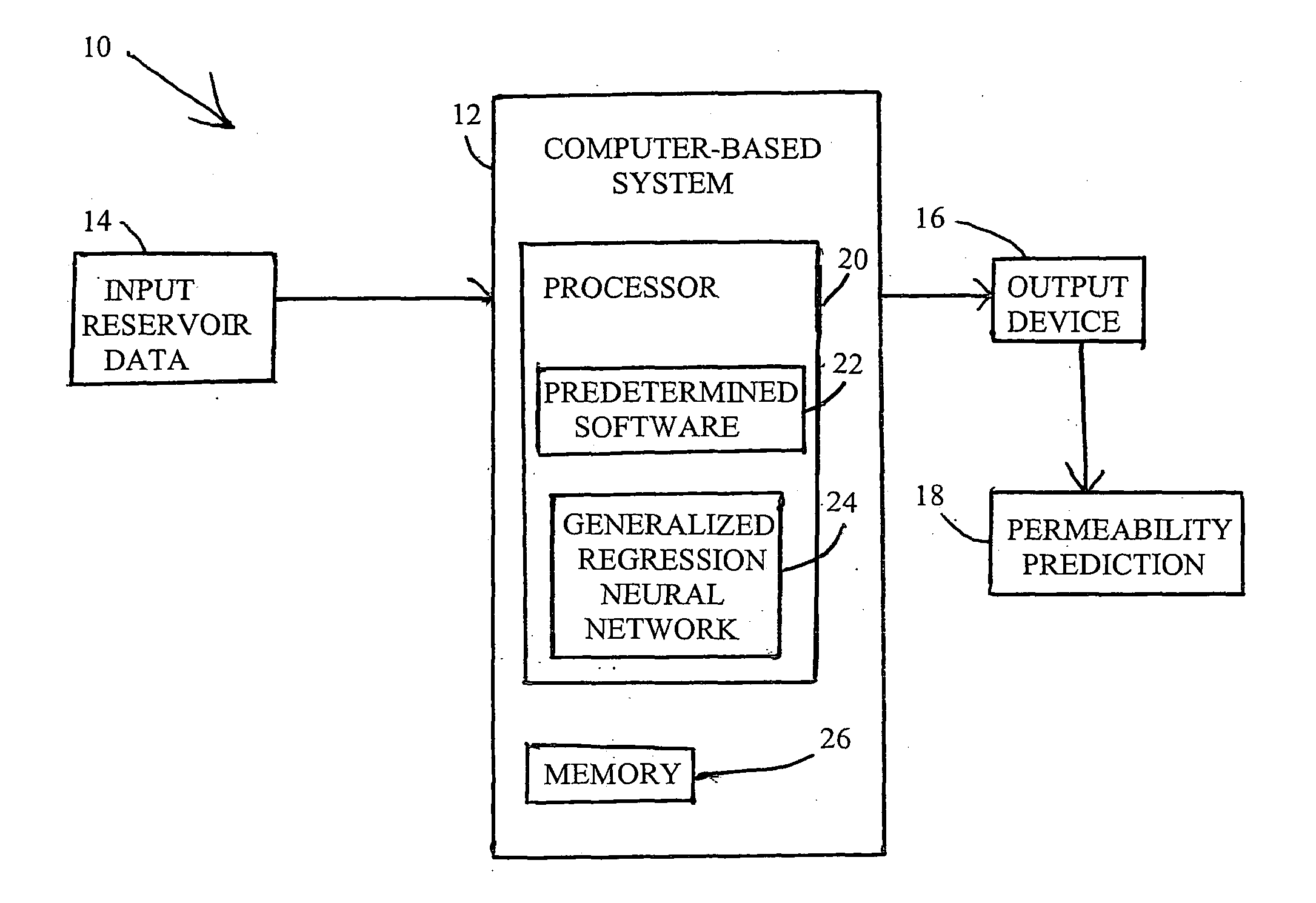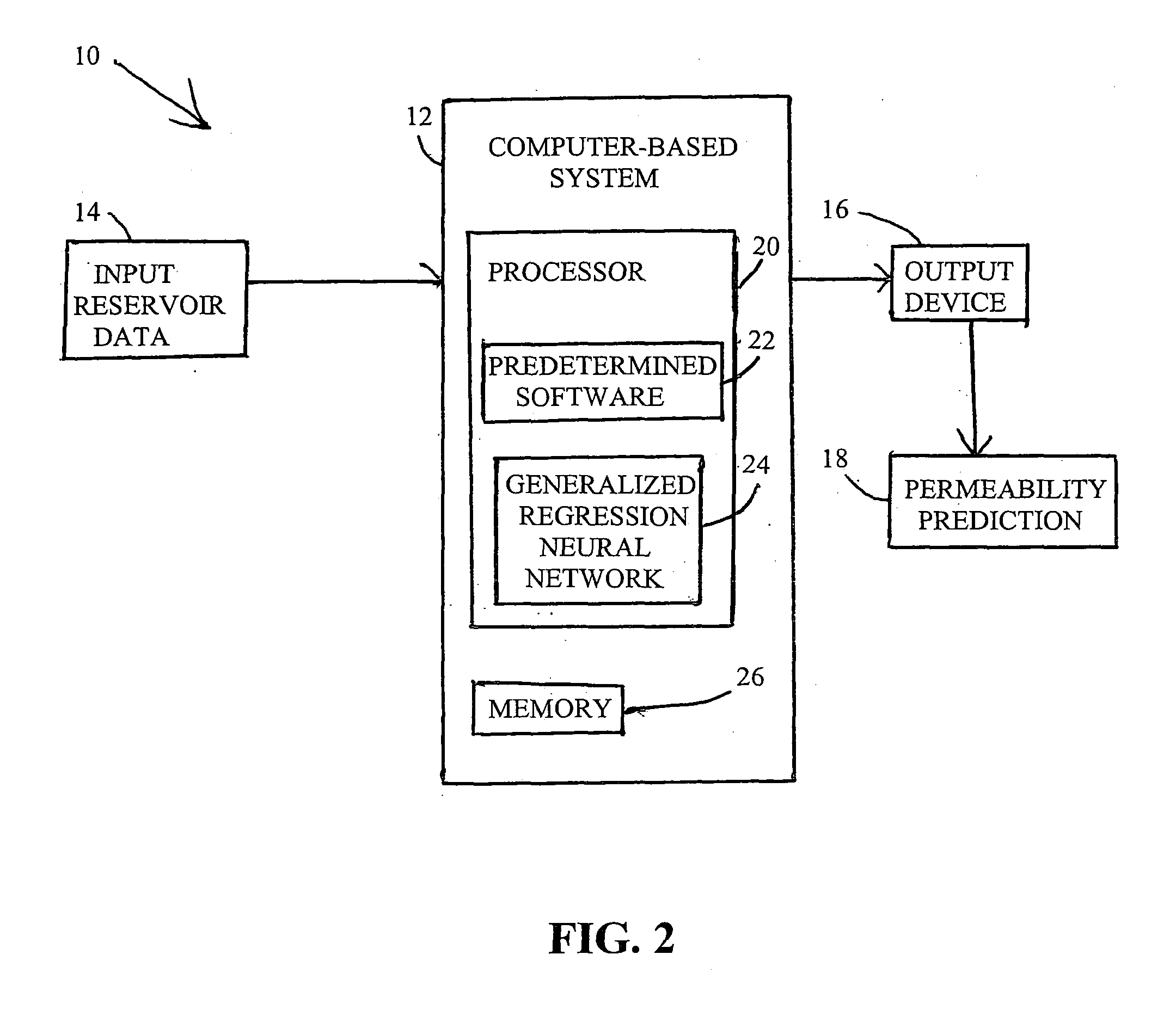Artificial neural net work models for determining relative permeability of hydrocarbon reservoirs
a technology of artificial neural nets and hydrocarbon reservoirs, applied in biological models, instruments, borehole/well accessories, etc., can solve the problems of limited success of prior art methodologies for developing empirical correlations to obtain accurate estimates of relative permeability data, high heterogeneity of carbonate reservoirs, and limited success of laboratory measurement protocols for relative permeability measurement. , to achieve the effect of substantial required time, cost saving, and extensive lab work
- Summary
- Abstract
- Description
- Claims
- Application Information
AI Technical Summary
Benefits of technology
Problems solved by technology
Method used
Image
Examples
Embodiment Construction
[0019]As shown in FIG. 2, a system 10 and method of the present invention employs GRNNs to determine a relative permeability predictions based on reservoir data of a hydrocarbon reservoir. The system 10 includes a computer-based system 12 for receiving input reservoir data for a hydrocarbon reservoir to be processed and to generate outputs through the output device 16, including a relative permeability prediction 18. The output device 16 can be any known type of display, a printer, a plotter, and the like, for displaying or printing the relative permeability prediction 18 as numerical values, a two-dimensional graph, or a three-dimensional image of the hydrocarbon reservoir, with known types of indications of relative permeability in the hydrocarbon reservoir, such as different colors or heights of a histogram indicating higher relative permeability as measured in different geographically in regions of the hydrocarbon reservoir.
[0020]The computer-based system 12 includes a processor...
PUM
 Login to View More
Login to View More Abstract
Description
Claims
Application Information
 Login to View More
Login to View More - R&D
- Intellectual Property
- Life Sciences
- Materials
- Tech Scout
- Unparalleled Data Quality
- Higher Quality Content
- 60% Fewer Hallucinations
Browse by: Latest US Patents, China's latest patents, Technical Efficacy Thesaurus, Application Domain, Technology Topic, Popular Technical Reports.
© 2025 PatSnap. All rights reserved.Legal|Privacy policy|Modern Slavery Act Transparency Statement|Sitemap|About US| Contact US: help@patsnap.com



